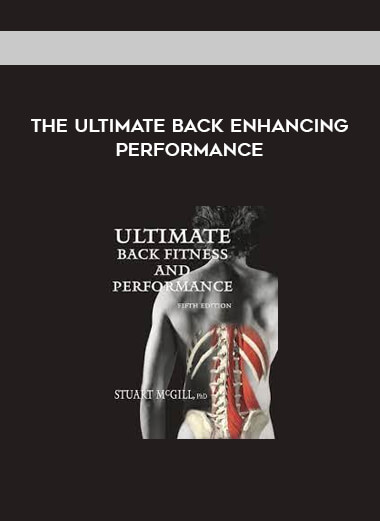Courses Infomation
An Intensive Training Lab on Total Joint Replacements from Terry Rzepkowski
 An Intensive Training Lab on Total Joint Replacements from Terry Rzepkowski
An Intensive Training Lab on Total Joint Replacements from Terry Rzepkowski
Faculty:Terry Rzepkowski
Duration:Full Day | Format:Audio and Video
Archive : An Intensive Training Lab on Total Joint Replacements from Terry Rzepkowski
Description:
Treatment sessions that are “hands-on” during the acute phase of recovery through the subacute phase
video case studies of the most advanced robotic and computer surgery procedures
specific rehabilitation issues for both conventional and cutting-edge surgical techniques
Key tactics for PT/INR integration at the point of treatment Outpatient and beyond: Realistic tactics for optimum function and joint lifetime
Total joint replacement is now a routine, elective procedure for patients of all ages with impaired articular joint components thanks to recent advancements in the procedures, tools, and parts. This puts pressure on us to stay up with medical advancements and the active expectations of patients.
In order to offer a thorough understanding of whole joint replacement surgery, Terry Rzepkowski, DPT, is enthusiastic to share his knowledge and enthusiasm in orthopedics as a total joint rehabilitation specialist. Have there ever been times when you wished you had the time but your hectic treatment schedule prevented it? We will watch and analyze real joint replacement films in this class so that you can distinguish between conventional alternatives and all of the most recent treatments for the shoulder, elbow, hip, knee, and ankle.
Additionally, we will practice intervention applications and do “hands-on” demonstrations for patients with complete joint replacements, from acute post-operative care through advanced out-patient progression. After completing this course, you will have a better understanding of the surgical procedure, be better prepared to assist patients in setting reasonable expectations, have more confidence in this constantly evolving field, and improve patient reports of satisfaction following total joint replacement surgery.
OUTLINE
factors that affect joint replacement
muscular inequity
acute wounds
Chronic diseases
systemic problems
Aspects of Preoperative Selection
Postural irregularity
imaging for diagnosis
Function and degree of discomfort
Conventional treatments
bodily complications
proportional bone density
Postoperative factors: Quick rehab? competent nursing? Home? Which option is best in terms of time, activity constraints, help, and accessibility?
Video Presentations of Surgical Operations
total shoulder replacement (TSA)
Backward TSA
total elbow replacement
Traditional posterior and lateral hip arthroplasty (THA) techniques
THA revision and its predecessors
conventional and subvastus total knee arthroplasty
replacement of the whole ankle
Future joint replacement technology:
Total elbow arthroplasty aided by video radiograph
aided robotic and computerized hip, knee, and ankle replacement
Interventions for Severe Post-Op Recovery
Management of pain, tolerance to opioids, and constipation brought on by opioids (OIC)
PICO dressing VTE prophylaxis demonstration for wound care and infection prevention
a practical demonstration
Point-of-care PT/INR
The most recent advice on TED hose
Cold compression equipment and cold recirculation systems
Sessions for Treatment from the Acute to the Subacute Recovery Phase
Therapy for physical and mental health
Motion limitations
showing the appropriate posture
Practical application
Wearing and taking off of UE immobilizers
Active proximal scapular exercise, cervical stretching methods, and shoulder, distal UE exercises
Exercises and progressions for the conventional/anterior approach hips that should be started right after surgery, along with transfer considerations
Knee: Immediate post-operative stretches, progressions for the subvastus approach, and exercises
Strategies for Optimal Function and Joint Longevity: Out-patient and Beyond
Hands-on exercises
Shoulder: Manual exercises to strengthen the rotator cuff and develop proximal scapular stability
Hip: Development of proprioceptive, balance, coordination, and proximal trunk stability exercises; restoration to normal gait mechanics.
Knee: Increasing flexibility exercises, mobilizing the patella, the significance of wearing appropriate footwear, proprioceptive, balance, and coordination exercises, and resuming normal gait mechanics
OBJECTIVES
Apply acute and sub-acute intervention techniques directly to the patient’s whole shoulder, hip, and knee.
Examine the main justifications for scheduling joint replacement surgery, taking into account factors related to postoperative recuperation.
Apply cold treatments, UE immobilizers, and point-of-care PT/INR in practice.
Consider choices for anticoagulants, wound care, and postoperative discomfort.
To choose the proper post-op limits, compare surgical methods and techniques using video presentations.
Describe when it is appropriate to reverse a TSA.
Differentiate between the numerous surgical methods for THA that are now available.
Make a distinction between the subvastus approach for TKA and conventional surgical methods.
Examine the benefits of robotic and computer-assisted replacement operations.
Applying cutting-edge outpatient intervention techniques firsthand with a patient’s whole shoulder, hip, and knee.
Salepage : An Intensive Training Lab on Total Joint Replacements from Terry Rzepkowski
About Author
<author content>































Reviews
There are no reviews yet.